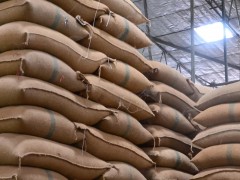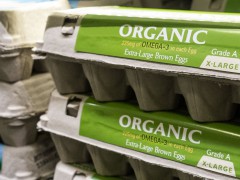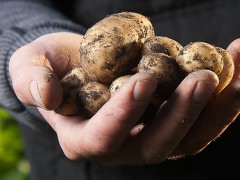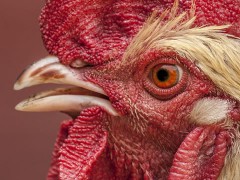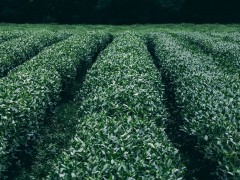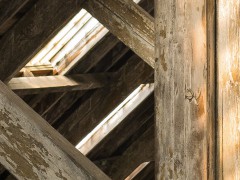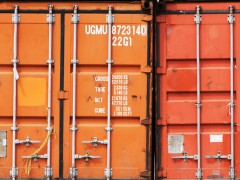All this week I will be posting in-depth about the Michigan Department of Natural Resources (DNR) ban on certain hog species within the state. In case you have missed a beat or two, Michigan is trying to keep its wild hog population under control by issuing a series of broadly-worded restrictions on commercial producers of swine that exhibit an arbitrary set of visual characteristics. This being America, the Land of Big Ag, the regulations disproportionately burden small-scale and independent farmers, namely those looking to inject diversity in the market by producing and selling heritage breeds. As the latest attempt by a regulatory agency to restrict an alternative agricultural practice, this is pretty newsworthy stuff if you are into food freedom, small-scale agriculture, or good food.
We begin this week-long saga with a picture of this little troublemaker here:
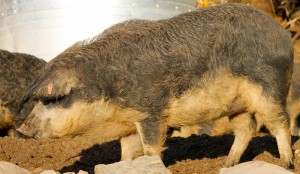
This corpulent fellow is a Mangalitsa, a lard type hog imported from Europe and commercially grown by a handful of dedicated and conscientious domestic breeders. He’s different. He’s sustainably raised. He’s delicious, and he must not be subjected to clumsy regulation, for he can fight back.
Mosefund Farm in Branchville, New Jersesy is now the largest breeder of Mangalitsa in the United States. They are also the ambitious visionaries behind the formation of the American Mangalitsa Breeders Association (AMBA), the non-profit corporation which represents the farmers that grow Mangalitsa. Mosefund and I created the Association to help its members collectively market the breed and collectively bear regulatory burdens, both so that Mangalitsa breeders could better compete with other breeds as well as with commodity pork. Believe it or not, this is an unfortunate truth about farming in America. Small-scale farmers actually need organizational and logistical support to share compliance costs. Growing heritage breeds is particularly challenging. For example, even the smallest farms must comply with lengthy federal regulation of breed-specific marketing claims made on product labels. Dealing with regulations like this, which were written for gigantic industrial farms, necessitates cost sharing. We envisioned the Association as the perfect vehicle for economically providing compliance advice or contesting legislation that can affect the breed.
Fortunately for the breeders of Mangalitsa, they had this organization in place when the DNR passed its rules. The first official act of the Association was to submit a letter of complaint to the Michigan DNR concerning the affect that its ham-handed regulation (see what I did there?) would have on Mangalitsa growers within the state.
Subsequent posts throughout the week will discuss the Michigan regulations themselves, as well as the moves made by the Association to protect the interests of its membership. Stay tuned…


